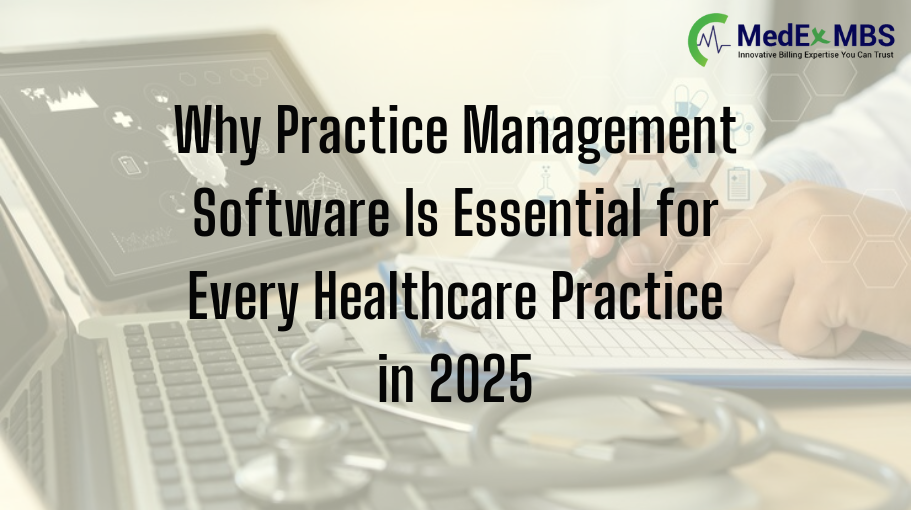Maximizing Reimbursement for New Patient Visits: CPT Code 99203

The 99203 code pertains to outpatient visits for new patients that necessitate a comprehensive history, examination, and low complexity decision-making. Correct application of this code will facilitate payment and prevent claims-related issues. This article will elucidate the components, time requirements, and frequent errors associated with the 99203 code, enabling you to utilize it accurately. Quick Hits The 99203 code is designated for new patient outpatient visits that demand a detailed medical history, examination, and low complexity medical decision-making for billing and compliance purposes. Accurate documentation of the essential components: patient history, physical examination, and medical decision-making is imperative for the application of CPT code 99203 and to ensure payment. Remaining informed about coding guidelines, reimbursement rates, and the application of modifiers such as 25 is crucial for precise billing and enhancing patient care and satisfaction. What is CPT Code 99203 CPT code 99203 is applicable for outpatient visits involving new patients that require a comprehensive medical history, examination, and low complexity medical decision-making. This code is relevant when the patient has not consulted the physician or another physician of the same specialty and group within the past three years, including other outpatient visit circumstances. This aspect is vital for coding and billing as it guarantees that the services rendered comply with the American Medical Association (AMA) standards. For the 99203 code, the necessary care components include a medically appropriate history, a detailed examination, and low complexity medical decision-making. These elements are essential to validate the code and receive payment for the services rendered. Grasping these components is crucial for coding and billing services and ensuring a seamless reimbursement process. The 99203 code serves as a fundamental element of medical coding that underpins the documentation and billing of initial patient visits. Proper utilization of this code guarantees coding compliance and enhances overall patient care by maintaining clear medical records. 99203 Components To bill under 99203, healthcare providers are required to document the following components. First, the patient’s medical history must be recorded, which includes: The patient’s chief complaint History of present illness Review of systems Past medical, family, and social history This serves as the foundation for understanding the patient’s current health status and potential risk factors. Next, a physical examination is necessary. It should be comprehensive, covering multiple organ systems, or a detailed examination of a single organ system if required. This examination provides a holistic view of the patient and aids in identifying any abnormalities that may require further investigation or treatment. The medical decision-making process for 99203 is classified as low complexity. This indicates that the decisions involved are not intricate. The provider must assess the patient, contemplate treatment options, and make decisions that are less complex than those associated with higher-level codes. Documenting this decision-making process is crucial as it substantiates the use of 99203 and the associated billing. Time Considerations for 99203 Time is an important factor in billing for 99203. Patient visits billed under this code generally last between 30 to 44 minutes. This duration encompasses face-to-face interaction with the patient as well as any additional time spent on the patient’s case, such as reviewing medical records or coordinating care with other providers. Accurate documentation of time is essential to demonstrate the level of care provided during 99203 visits. The documentation should clearly indicate the amount of time spent with the patient and the services rendered. This ensures that the billing accurately reflects the time and effort invested in patient care. Furthermore, precise time tracking supports the level of service billed and minimizes the risk of audits and denied claims. It reinforces the provider’s request for payment and guarantees that they receive compensation for the care they have delivered. 99203 vs 99204 vs 99205 Distinguishing between 99203 and the other new patient codes, 99204 and 99205, is essential for accurate billing and coding. 99203 pertains to low complexity, 99204 to moderate complexity, and 99205 to high complexity. Recognizing these distinctions aids in selecting the appropriate code for the patient visit. The duration of the encounter also differs among the codes. For instance, 99203 requires 30-44 minutes, while 99204 necessitates 45-59 minutes. These time specifications are crucial for selecting the correct code and ensuring that the billing accurately reflects the level of service provided. When selecting a code for billing, providers should take into account the complexity of medical decision-making, the thoroughness of the history and examination, and the time spent with the patient. By doing so, they can guarantee that the chosen code accurately represents the services rendered and facilitates payment. 99203 Documentation Accurate and comprehensive documentation is vital for successful billing of 99203. Providers must ensure that their documentation captures the depth of the history and examination. This encompasses the patient’s chief complaint and the history of the present illness. Additionally, it should include a review of systems and any pertinent past medical, family, and social history. Furthermore, providers should systematically document the medical decision-making process to substantiate the complexity of the patient’s condition. This involves assessing the patient’s status, weighing treatment options, and articulating the rationale for the selected plan of care. Such detailed documentation not only supports the application of 99203 but also safeguards against claim denials. Failure to align documentation with the billed level of service can lead to significant issues, including denied claims and audits. Therefore, providers must adhere to proper documentation practices to ensure their billing is precise and compliant with coding standards. 99203 Errors Billing mistakes are prevalent in the healthcare sector, and the 99203 code is no different. A frequent error involves billing this code for established patients rather than new patients, which may result in audits and penalties. Ensuring that the patient qualifies as a new patient is essential for accurate billing. Another error is the incorrect application of the 99203 code, which can lead to reduced reimbursement and diminished patient satisfaction due to inadequate service quality.
Why Practice Management Software Is Essential for Every Healthcare Practice in 2025

Not long ago, healthcare practices found themselves inundated with excessive paperwork, disconnected software, and processes that consumed more time than the actual care of patients. Imagine a small practice attempting to manage appointments on a whiteboard, keeping medical records on paper, and handling billing through scattered Excel sheets. This situation is chaotic, susceptible to mistakes, and significantly drains valuable time. Common issues included billing inaccuracies, missed appointments, prolonged patient wait times, and delayed payments. Additionally, the struggle to manually keep pace with regulations, codes, and insurance claims added to the frustration. Patients often faced difficulties in receiving timely care, while providers were overwhelmed by the disarray in their back-office operations. In this blog, we will outline how automation and intelligence can enhance every facet of your practice, encompassing financial, administrative, and more, through a cohesive practice management system. So, what is the challenge? Why is it imperative to adopt PMS at this moment? By 2025, the healthcare landscape is expected to undergo a significant transformation with the advancement of technology, prompting practices to adopt digital tools, such as practice management software, to streamline their operations. What was once considered a luxury has now become essential. These systems now consolidate everything from patient scheduling to billing and medical records, all within a single platform. No longer will there be isolated software or manual data entry. With PMS, practices can effectively manage appointments, enhance patient satisfaction, maintain billing accuracy, and ensure compliance with constantly changing regulations, all from one unified system. Let us explore the primary challenges faced by healthcare providers and how PMS is addressing these issues. Increased Administrative Burden and Operational Complexity Healthcare practices frequently face a significant burden of administrative responsibilities, and as the intricacies of care increase, the need for effective management also escalates. Personnel must oversee appointments, patient information, billing, coding, and insurance claims, all while ensuring adherence to various regulations. How PMS Assists: Automated Workflow: A practice management software system streamlines numerous administrative functions, such as scheduling appointments, verifying insurance, and submitting claims. For instance, by automatically dispatching patient reminders and handling cancellations, PMS diminishes no-show rates and enhances scheduling efficiency. Data Integration: All patient data, billing information, and scheduling are consolidated into a single platform, minimizing the time allocated to administrative duties and enhancing accuracy. Revenue Cycle Challenges and Claim Denials Errors in billing and coding continue to pose one of the most significant barriers to revenue collection. Claims are frequently rejected due to erroneous codes, incomplete details, or missed deadlines, which can critically impact a practice’s cash flow. How PMS Assists: Coding Accuracy and Real-time Validation: Contemporary practice management systems incorporate sophisticated coding frameworks and provide real-time validation, guaranteeing that claims are precise before submission. For example, a cardiology practice utilizing PMS can reduce its claim denial rate by 50% within six months due to the automatic validation of ICD-10 codes and payer-specific requirements. Faster Claims Submission: PMS accelerates the claims process by automating submission and tracking, thereby minimizing delays associated with manual entry. This enables practices to expedite their revenue cycle and decrease outstanding accounts receivable (AR). Data Security and Compliance with Evolving Regulations In 2025, healthcare practices must remain vigilant in safeguarding patient data and adhering to increasingly intricate regulations, such as the Health Insurance Portability and Accountability Act (HIPAA) and the 21st Century Cures Act. Non-compliance can lead to substantial fines and harm to a practice’s reputation. How PMS Assists: Robust Data Security: PMS platforms are equipped with advanced security features to safeguard sensitive patient information. Through encryption and multi-factor authentication, PMS aids healthcare practices in maintaining HIPAA compliance and security. Regulatory Updates: Practice management software automatically updates to align with evolving regulations, alleviating the need for practices to continually modify their processes. Whether it involves new CPT codes or alterations in insurance billing, these updates mitigate the risk of non-compliance. Patient Experience Expectations Patients are increasingly seeking convenience and transparency in their healthcare interactions. They anticipate easy access to their medical records, the capability to book appointments online, and prompt communication with providers. Practices that do not fulfill these expectations risk losing patients to competitors who offer a more efficient, digital experience. How PMS Assists: Patient Portals: PMS systems frequently feature patient portals that enable patients to access their medical records, schedule appointments, settle bills, and communicate with providers. Enhanced Communication: Automated reminders, follow-up messages, and straightforward access to appointment scheduling facilitate continuous communication between practices and patients, thereby improving their overall experience. Scalability and Adaptability As healthcare practices expand, the systems they utilize must scale and adjust without significant interruptions. Growing a practice, incorporating new providers, or introducing additional services can pose challenges if the management systems lack flexibility. How PMS Assists: Seamless Scaling: PMS systems facilitate the growth of practices without disruption. New locations or providers can be integrated effortlessly. For instance, a multi-location dental practice in New York can broaden its reach to several new sites while maintaining centralized management. This can result in a 15% decrease in overhead expenses across all locations. Adaptation to Value-Based Care: PMS solutions are designed to support the transition to value-based care by integrating with tools such as Electronic Health Records (EHR) and telemedicine platforms. Practice Management Software: An Essential Tool for the Future of Healthcare Practice management software has become indispensable for healthcare practices aiming to remain organized and efficient. If you are in search of the best practice management software at a reasonable price, supported by an expert team, reach out to MedEx MBS. Maximus, our PMS software, is designed to adapt to the evolving needs of your expanding practice, focusing on enhancing reimbursement rates and boosting profitability. It offers comprehensive insights into every phase of your revenue management process, enabling you to make informed decisions. Request a demo to discover how it can benefit your practice.
